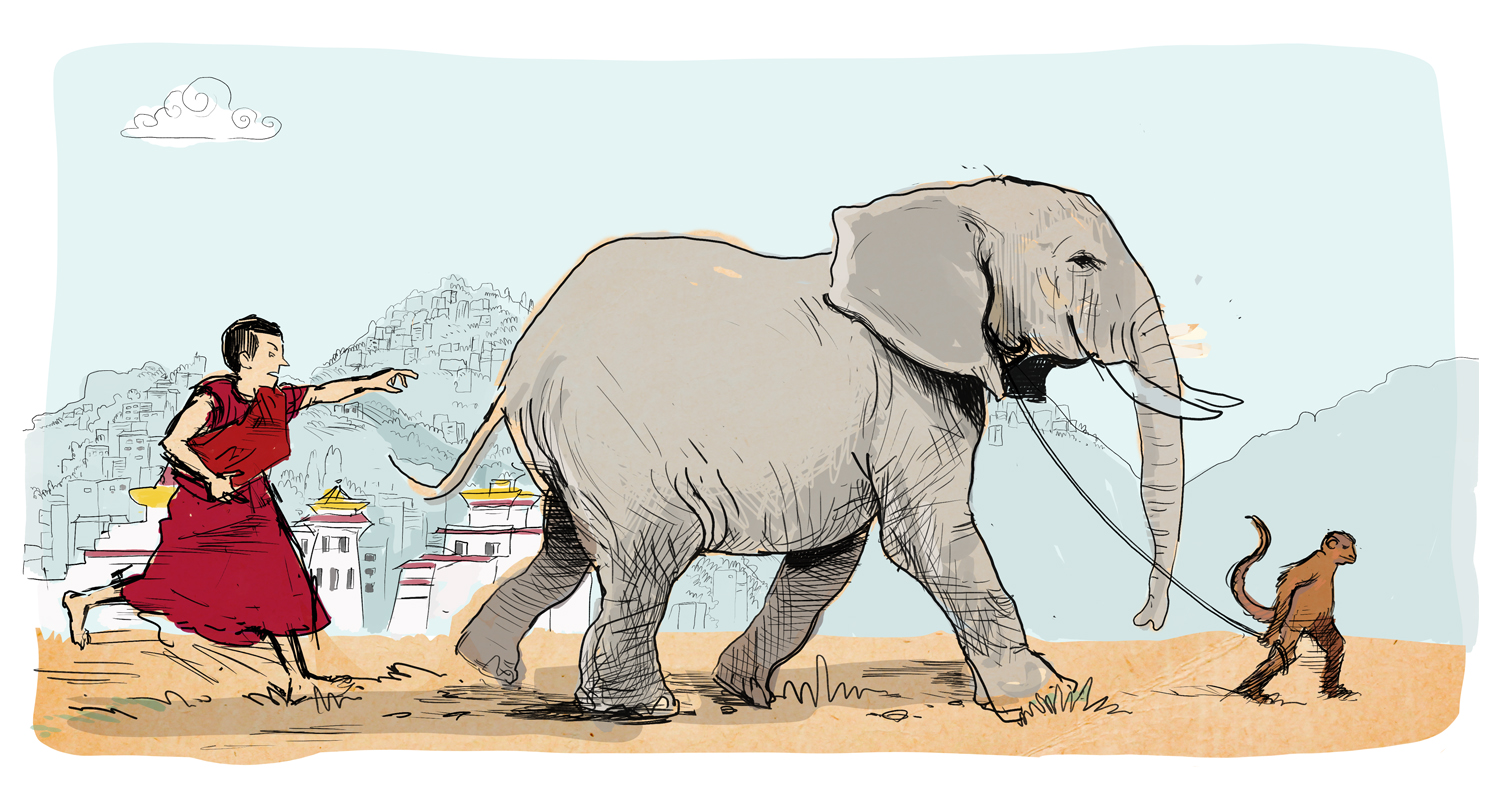The elephant is a metaphor for a, potentially, difficult to control mind.
Everything is a story. We are hard-wired to tell stories because they help us navigate life's complex social problems. Stories are the cornerstone to what we do at Cognitive and they can be used to change the world for the better. Cognitive illustrator Alex Hedworth explores how ancient Buddhist teachings use stories to help develop meditative concentration through the power of visualisation. A process that has helped millions of tuned-in souls live a more mindful life.
“Stories are the cornerstone to what we do at Cognitive and they can be used to change the world for the better.”
Cognitive illustrator Alex Hedworth
As an illustrator and avid meditator I have always found the Buddhist visualisations of the meditative path to be both informative and aesthetically pleasing. Similar to the 'Storymaps' that we work with here at Cognitive the Buddhist depiction of the stages of samatha meditation features numerous visual metaphors for one of the most complex subjects known to man….the mind!
The word samatha refers to pacifying or calming the mind and this story map is a visualisation of all the different stages of this process. At the beginning of the stages the meditator is depicted chasing after a monkey that is leading an elephant on a rope. The elephant is used as a visual metaphor for the mind because of its potential to cause harm and difficulty to control. Its dark colour represents the hindrances and problems of the mind.
The dark elephant of the human mind - Illustrated by Alex Hedworth
The monkey represents attention and its dark colour means that the attention is scattered and unruly. The monkey dragging the elephant along on a leash is a funny and clever way to depict how mischievous our attention is, wherever attention goes the mind will follow and attention doesn’t always have the minds best interest at heart. The meditator holds a goad and a rope in his hands, they symbolise the intention to tame the mind and the vigilant mindfulness needed in order to do it.
The 'Monkey Mind' is hard to tame! Illustration by Alex Hedworth
As this Buddhist “Storymap” progresses and the meditator moves further and further along the path the elephant and monkey slowly but surely fall into line. The dark colours of the animals lighten and become luminous as the various hindrances and worries of the mind are shed. Eventually the meditator gains full control as the monkey disappears and the elephant graciously accepts his authority.
“As this Buddhist “Storymap” progresses and the meditator moves further and further along the path the elephant and monkey slowly but surely fall into line.”
Even after hundreds of years the visual language used in the depictions of the stages of meditation are still very pertinent and easy to understand. This speaks to the power of images, which have been used as a way to communicate ideas since time immemorial. It is also really interesting to see how the fundamental tools we use everyday at Cognitive, such as mapping out a story arc or using a metaphor to simplify and explain a complex idea, can be used in the pursuit of mental and spiritual improvement.





